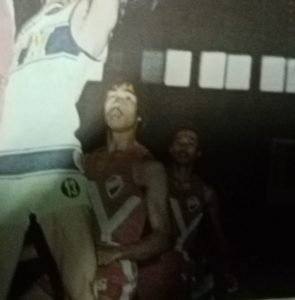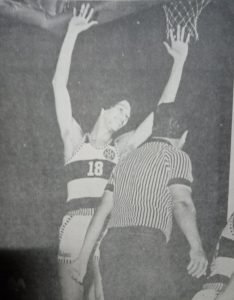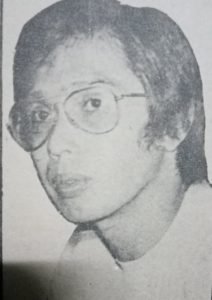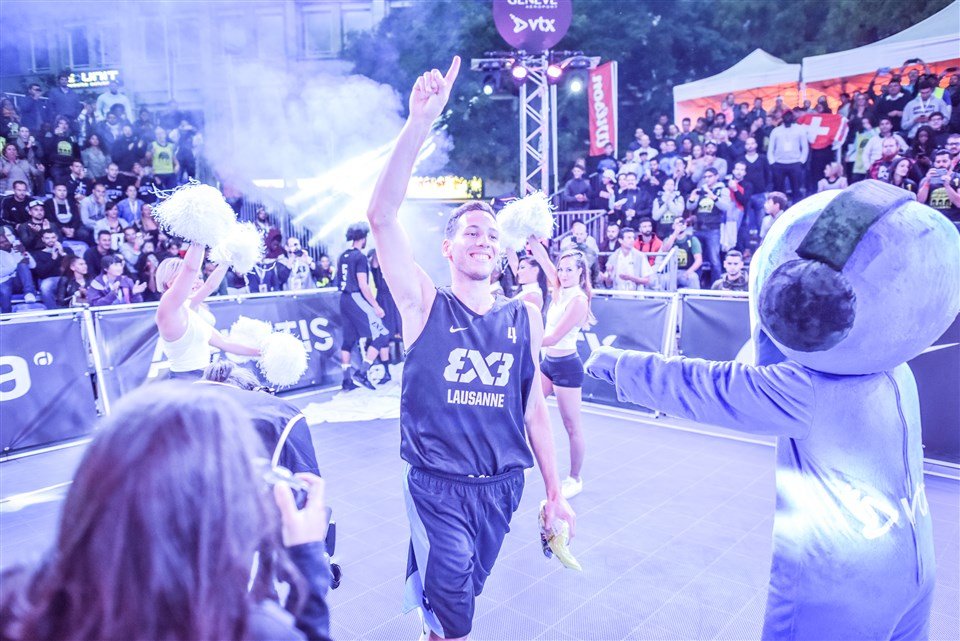
by Henry Liao

The creation of a professional league, the Philippine Basketball Association (PBA), in April 1975 altered the landscape of the country’s basketball history locally and internationally.
For one, players who opted to turn pro at the time automatically lost their amateur status, a prerequisite for anyone that wished to represent the country in international competitions sanctioned by the International Basketball Federation (FIBA).
It was only in 1989 that the FIBA established an “open basketball” policy that allowed even the pros to suit up for their flag. The Chinese Basketball Association (CBA), the second pro league in Asia, made its debut only in 1995, thus avoiding any FIBA complications that deeply affected the Philippines’ participation in Asian and World competitions from 1975 to 1989.
In its first international sojourn months after the PBA first saw the light of day, the Philippines was stripped of its best talents when it competed in the 1975 Asian Basketball Confederation (ABC) festivities (the harbinger of the FIBA Asian Championship that has since been reinvented as the FIBA Asia Cup starting in 2017 with the entrance of Oceania powers Australia and New Zealand to its fold).

The Filipinos failed miserably to defend the ABC crown that they won in Manila in 1973, sinking to a fifth-place finish in the games held in Bangkok, Thailand in mid-November 1975.
With the employment of the youthful players from the old Manila Industrial and Commercial Athletic Association (MICAA), from which nine prominent franchises had defected to form the PBA, the country finished with a 5-4 record and trailed the champion People’s Republic of China (9-0), a first-time entry; Japan (7-1), South Korea (6-2), and even India (5-3).
The PH team, made up of players mostly from the then- newly minted MICAA champion Yco Painters (who had won the title for the first time since 1964) and the second-place Manilabank Golden Bankers, were pulverized by upstart India, 113-69; and South Korea, 121-74, on consecutive days to conclude its miserable campaign.

The PBA, on the other hand, opened its season with nine teams, namely, the CFC (Consolidated Foods Company) Presto Ice Cream Makers, Crispa-Floro Redmanizers, Concepcion Carrier Weathermakers, Noritake (Mariwasa) Porcelain Makers, Royal Tru-Orange Orangemen (from San Miguel Corporation), Seven-Up Uncolas, Tanduay Distillers (owned by Don Manolo Elizalde with Yco as its MICAA team), Toyota Comets (owned by the Delta Motors Corporation) and Universal Textiles Weavers.
However, Crispa-Floro and Yco did not put up their best teams at the start of the PBA Season 1.
It was because they wanted several of their prominent veterans and national team players to maintain their amateur status, thereby allowing them to continue to play in the MICAA and other local competitions and hopefully, to have them represent the country in the 8th ABC event in Bangkok later in the year.
Unfortunately, Crispa, which in 1974 had captured the championships in the MICAA All-Filipino, Philippine Invitational and Palarong Pilipino, suffered three straight defeats to open its PBA campaign.

The Redmanizers lost to Noritake, 131-108; Seven-Up, 107-92; and Royal Tru-Orange, 111-94.
With the humiliating reversals, Crispa team owner Valeriano (Danny) Floro had seen enough.
Thirteen days after the season opener, the country’s nine best players (seniors and juniors) from Crispa were released to its PBA squad in the All-Filipino Conference. They were veterans William (Bogs) Adornado, Fortunato (Atoy Co), Philip Cezar, Alberto (Abet) Guidaben, Rodolfo (Rudy) Soriano and Johnny Revilla and three members of the PH team that topped the 1974 Asian Youth Basketball Championship in Manila – Alfredo Hubalde, Bernard Fabiosa and Virgilio (Bong) De la Cruz.
Though Adornado held out for another three games, the result of the transfer of the other eight players was immediate as the Redmanizers defeated Presto Ice Cream, 113-102, and eventually put together a five-game win streak to conclude the first round of the All-Filipino Conference.

Yco, on the other hand, held onto to top-flight veteran guards Freddie Webb and Miguel Mike Bilbao and the young core of Eleazar (Ely) Capacio, Roberto (Bert) De La Rosa, Gregorio (Greg) Gozum and Jaime (Jimmy) Taguines from its 1975 MICAA All-Filipino title unit coached by former Olympian player Edgardo Ed) Ocampo, to keep their amateur status intact.
Capacio and De La Rosa, both members of the 1974 Youth squad, and Gozum and Taguines went on to don the PH colors in the ABC conclave. Tapped for Yco’s PBA team Tanduay were Webb’s 1972 Munich Olympics teammates Ricardo (Joy) Cleofas and Marte Samson, heady playmaker Rene Canent, one-time UAAP MVP out of Far Eastern University Valeriano (Botchok) De Los Santos and Benjamin (Benjie) Cleofas Jr., the brother of Ricardo.
It was not until in the Second Conference of the 1976 PBA season that Webb and Bilbao were released to the Tanduay Distillers. The decision came just weeks after the Yco Painters surrendered their MICAA All-Filipino crown to the Manilabank Golden Bankers in a 1976 finals rematch between the two teams.
By 1976, Crispa had scored the first (Grand Slam) triple crown in PBA history and Asia’s oldest pro league was starting to make waves as the country’s ultimate roundball forum.
- Northport draft pick joins long list of Tiong Lian alumni in PBA - September 11, 2025
- PBA@50 - September 10, 2025
- Of Luka, and FIBA EuroBasket - August 2, 2025



